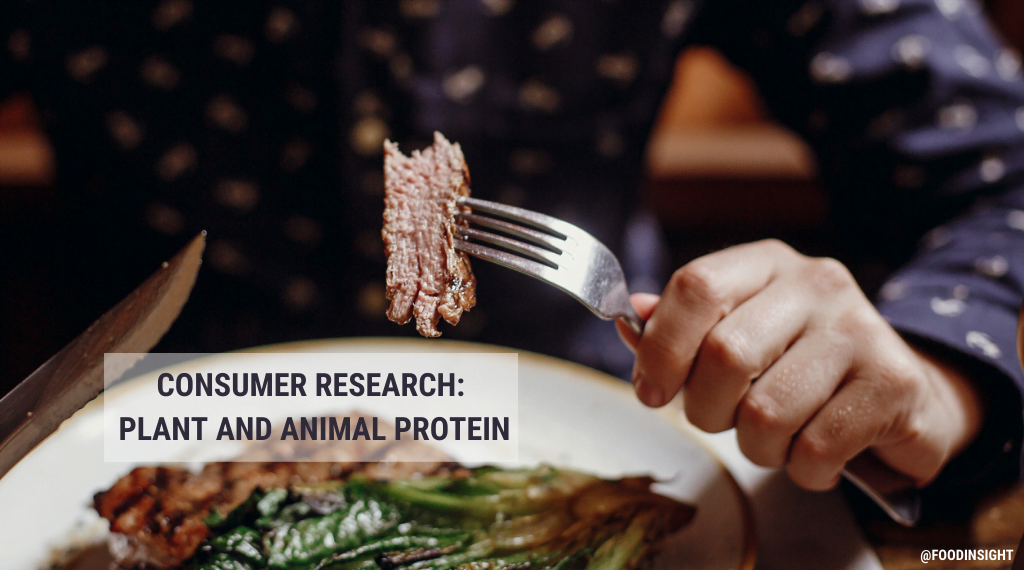Download the Survey Results Here
Highlights
- Most people try to eat protein at dinner and lunch; far fewer do so when eating snacks and desserts.
- Taste, type of protein, healthfulness and price rank highest in people’s consideration of protein choices, far outpacing purchase influencers like environmental sustainability, animal welfare and protein quality.
- Most people have tried at least one new type of plant protein in the past year. Vegetarians, vegans, pescatarians, people under 45 and those with a college degree were generally more likely to have opted for something new.
- While not yet on the market in the U.S., consumers are skeptical of cell-based meat.
Between the popularity of plant-based eating and diets like keto and Paleo, protein continues to be top–of–mind for American consumers. But exactly when and why do people prioritize protein? What are the purchasing influencers for the variety of options on the market? And what do people think about new choices being created through scientific advances—such as cell-based meat? This survey aimed to find out.
In addition to demographic information like race and ethnicity, gender and age, this survey also examined the impact of the eating patterns people follow on their perceptions perceptions and behaviors related to protein. Throughout, we’ve highlighted notable differences in responses between omnivores, vegetarians, vegans and pescatarians.
Here are some key findings:
Dinner tops the list of eating occasions during which people seek out protein. Nearly three in four (74%) said they try to eat protein with dinner, followed by 56% who said the same about lunch and 49% about breakfast. Protein doesn’t seem to be a priority for most when eating snacks and desserts or treats.
Reasons for choosing protein vary widely. Two in five said they consume protein to make sure they eat a balanced diet, followed by 36% who said they do so because it satisfies their hunger throughout the day. Men and people under age 45 were more likely to say they opt for protein to build muscle health or strength and to improve athletic performance.
Taste, type of protein, healthfulness and price rank highest in consideration of protein choices, far outpacing purchase influencers like environmental sustainability, animal welfare and protein quality. Much like we’ve seen in our annual Food and Health Survey, taste, price and healthfulness are key purchase drivers when it comes to the protein choices people make. Despite capturing widespread interest in nutrition and agriculture circles, animal welfare and environmental sustainability are the least prioritized purchase drivers.
Most people have tried at least one new type of plant protein in the past year. Continuing a trend we’ve observed for years, interest in plant sources of protein remains high. Sixty-five percent of respondents said they’d tried a new plant protein over the last 12 months, with the most popular options being plant alternatives to meat (28%), new varieties of milk alternatives (24%), new varieties of other dairy alternatives like plant-derived yogurt or cheese (21%) and other new varieties of packaged foods high in plant protein (21%). Tried–and–true plant protein options like legumes and whole grains also made the list, with 19% and 18% giving new varieties a shot in the past year, respectively. Vegetarians, vegans, pescatarians, people under 45 and college-educated respondents were generally more likely to have tried new plant protein options, while omnivores, white people, those 65 years or older and non-college educated respondents were more likely not to have tried any new types of plant protein in the past year.
Labels hold sway in protein choices. When asked about the importance of food labels or product descriptions, three in four said that at least one option played a role in their decision. For plant protein, the top labeling influences were “good source of protein” (28%), “natural” (26%) and “organic” (22%), beating out options like the Nutrition Facts label (19%), the ingredients list (16%) and “plant-based” (15%). Top influences for animal protein decisions were “No antibiotics” (23%), “Natural” (23%) and “No added hormones” (22%), which were also more important compared with the Nutrition Facts label (16%), ingredients list (12%) and commonly used labels like “cage free” (11%) and “free range” (11%).
Consumers are skeptical of cell-based meat. While cell-based meat is not yet on the market in the U.S., curiosity and anticipation around this new protein option, which is grown from animal cells in a lab, is high. But will people actually substitute it for traditionally raised meat when they have the chance? At this point, signs point to “Not often.” We gave survey respondents a theoretical scenario in which they had the choice between cell-based and traditionally raised meat, with both taste and cost equal between the two. Nearly three in four (74%) said they would choose standard animal protein over cell-based meat. There was variation by demographic group, however: people under 45, pescatarians and vegans were more likely to say they’d select the cell-based option.
METHODOLOGY
One thousand and nine online interviews were conducted among adults ages 18+ from November 9–10, 2020, and were weighted to ensure proportional results. The margin of error was ±3.1% at the 95% confidence level.
